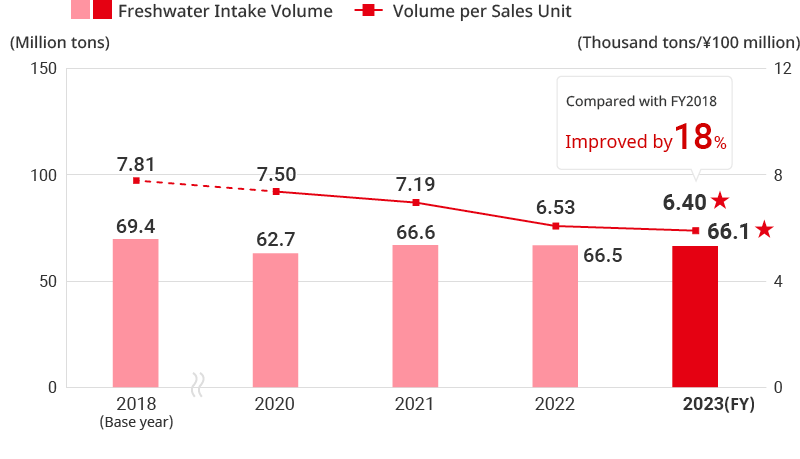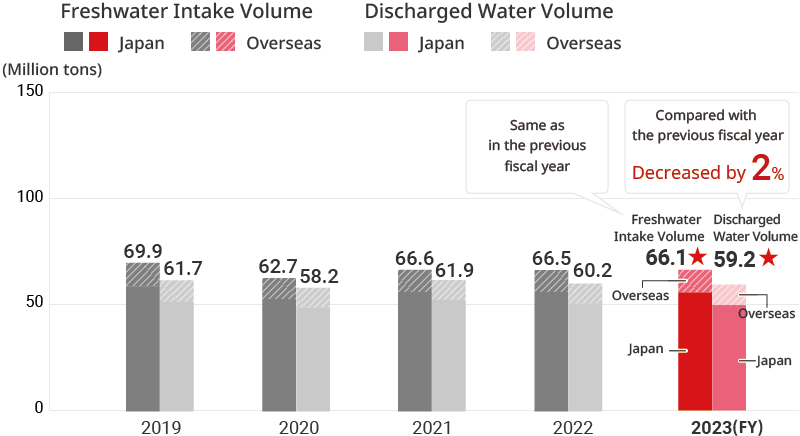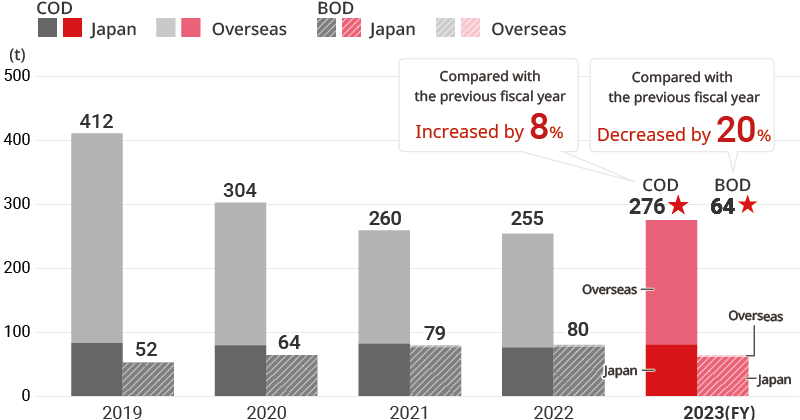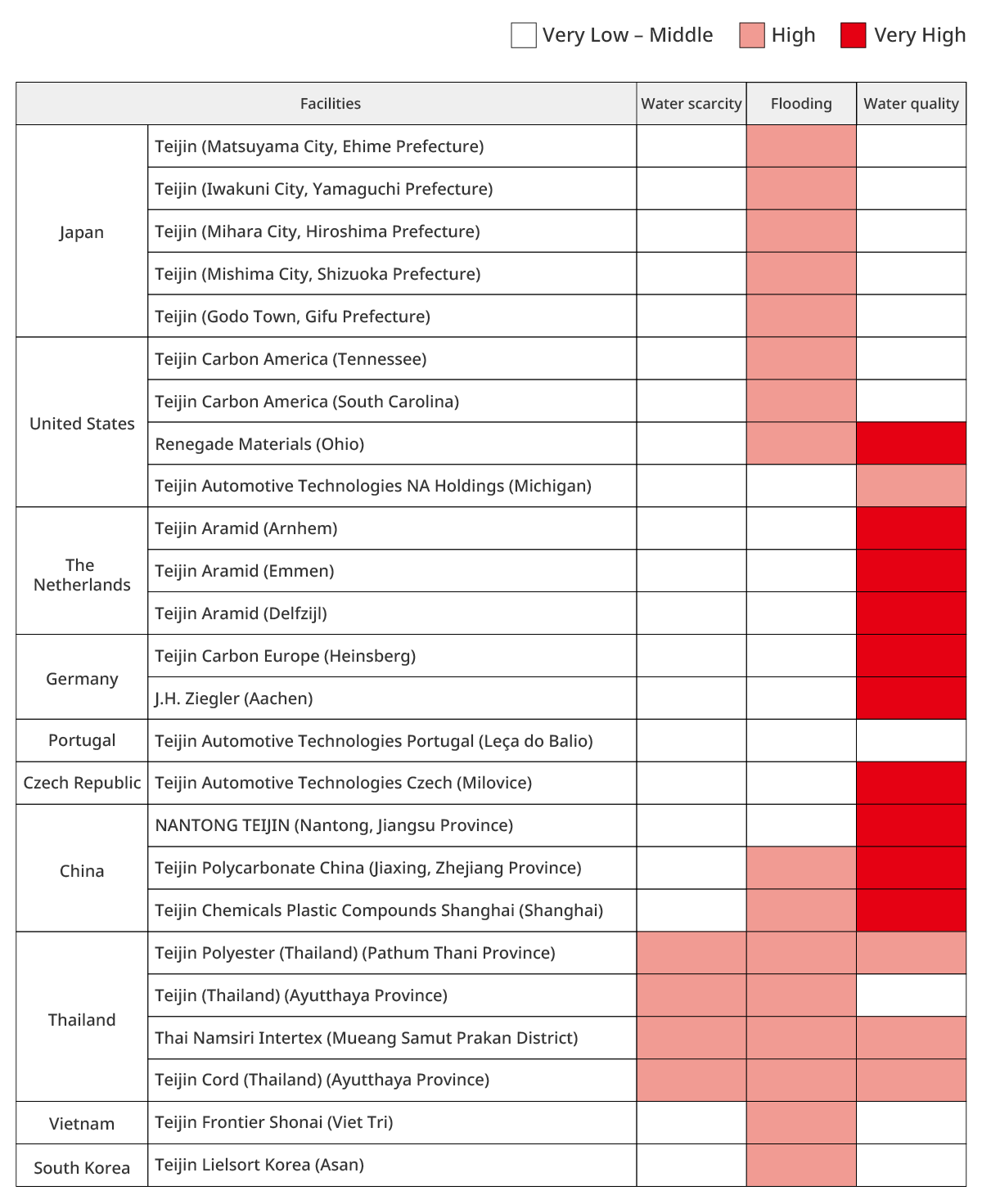Water
In response to the increasingly critical water shortages and water pollution worldwide, the Teijin Group is endeavoring to reduce water consumption at business sites bearing in mind water-related risks, while promoting the efficient use of water resources.
Metrics and Targets
The Group's target (KPI)
FY2030: 30% improvement in freshwater intake volume per sales unit (compared with FY2018)
We are expanding the number of products that use less water during the production process and are using water efficiently in our business activities. In these ways, we aim to achieve our target for reducing the amount of freshwater intake with a focus on curtailing water use at manufacturing sites and other locations that use high volumes of water. In FY2023, the freshwater intake volume amounted to nearly the same level as it was in the previous fiscal year, at 66.1 million tons . This results in an 18% improvement in volume per sales unit compared with FY2018.
. This results in an 18% improvement in volume per sales unit compared with FY2018.
Trends in freshwater intake volume and volume per sales unit

- *The amount of freshwater intake is the total of industrial water, groundwater, and tap water.
- *Per sales units are calculated using consolidated net sales as the denominator.
Environmental Load due to Wastewater
In FY2023, discharged water volume was down 1.7% from the previous fiscal year, to 59.2 million tons . In addition, chemical oxygen demand (COD) increased by 8% year on year to 276 tons
. In addition, chemical oxygen demand (COD) increased by 8% year on year to 276 tons , while biochemical oxygen demand (BOD) decreased 20% compared with previous fiscal year, to 64 tons
, while biochemical oxygen demand (BOD) decreased 20% compared with previous fiscal year, to 64 tons .
.
Trends in freshwater intake volume and discharged water volume

- *The amount of freshwater intake is the total of industrial water, groundwater, and tap water.
Trends in COD and BOD

- *Applies to wastewater discharged into rivers, oceans and lakes. Until FY2021, the COD value was used at sites measuring both COD and BOD. From FY2021, the COD values is calculated when discharging into sea areas and lakes, and the BOD values is calculated when discharging into rivers.
- *Corrected the FY2022 COD figures in November 2024.
Water Risk Evaluation
The Teijin Group's Materials Business and Fibers & Products Converting Business have a high level of dependence and impact on water. At the main manufacturing bases of these businesses (25 bases), we have conducted evaluations of basin water risks and operational water risks using the Water Risk Filter tool developed by the World Wide Fund for Nature (WWF). The evaluation of basin water risks confirmed that multiple bases face risks in terms of water scarcity, floods, and water quality. Meanwhile, the evaluation of operational water risks confirmed that all bases are curtailing risks related to water scarcity, floods, and water quality through the promotion of appropriate response measures. Specifically, to address and reduce the risk of water scarcity, these bases are pursuing measures such as projects to reduce the volume of water used in the product cleaning process. For the risks of floods, the bases have formulated business continuity plans to ensure that operations can continue even in the event of a large-scale natural disaster or other unexpected event. With regard to water quality risks, the bases are striving to reduce COD and BOD. In these ways, our manufacturing bases are promoting measures to appropriately respond to water risks.
Basin water risks existed at the main manufacturing bases (25 bases)

